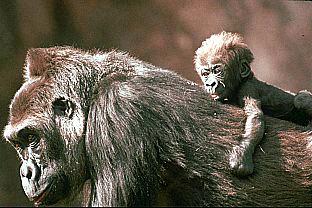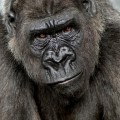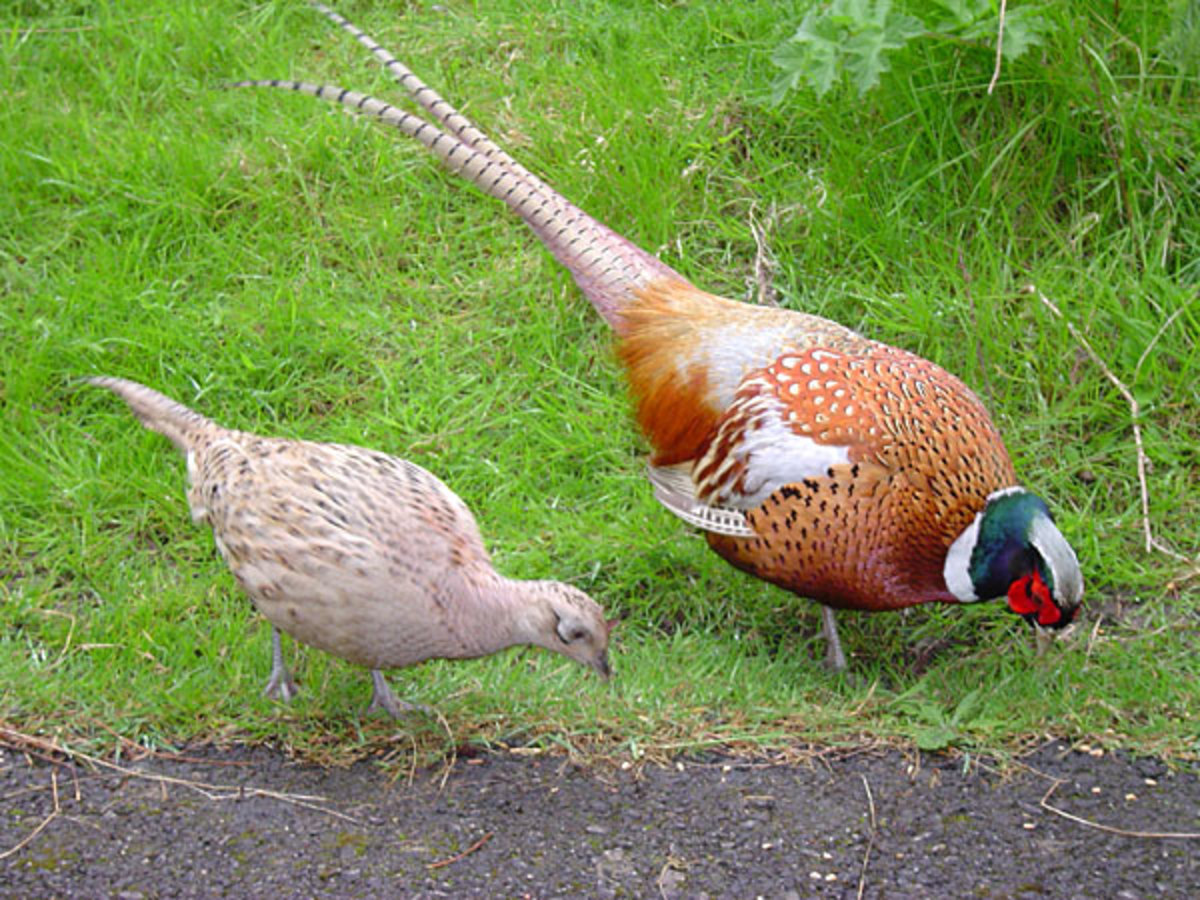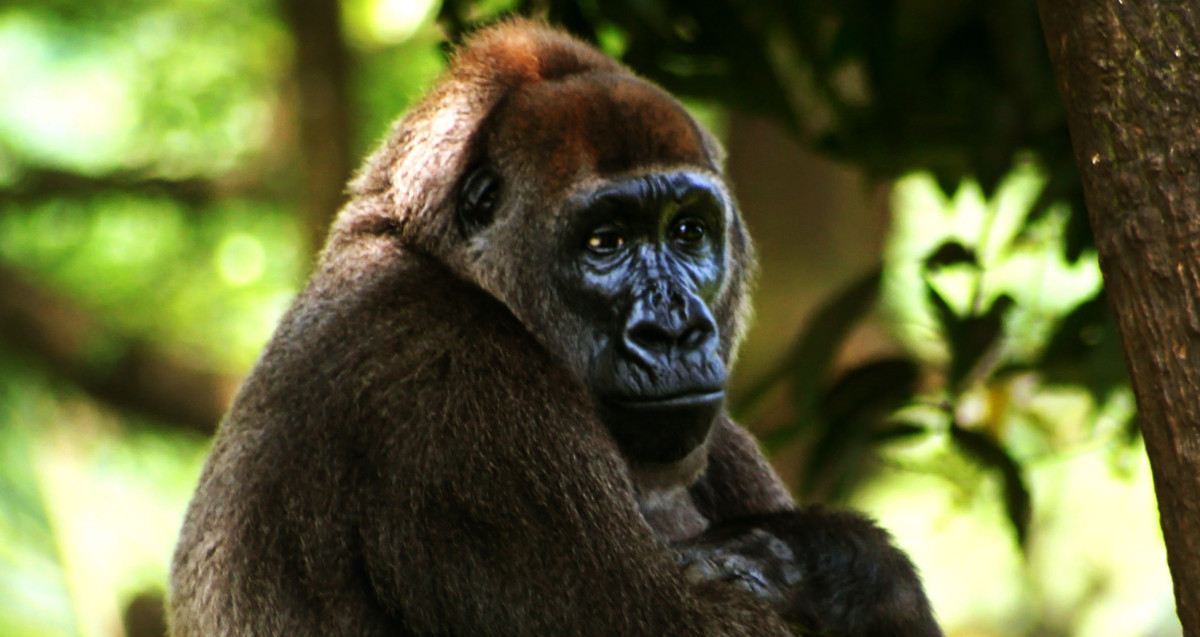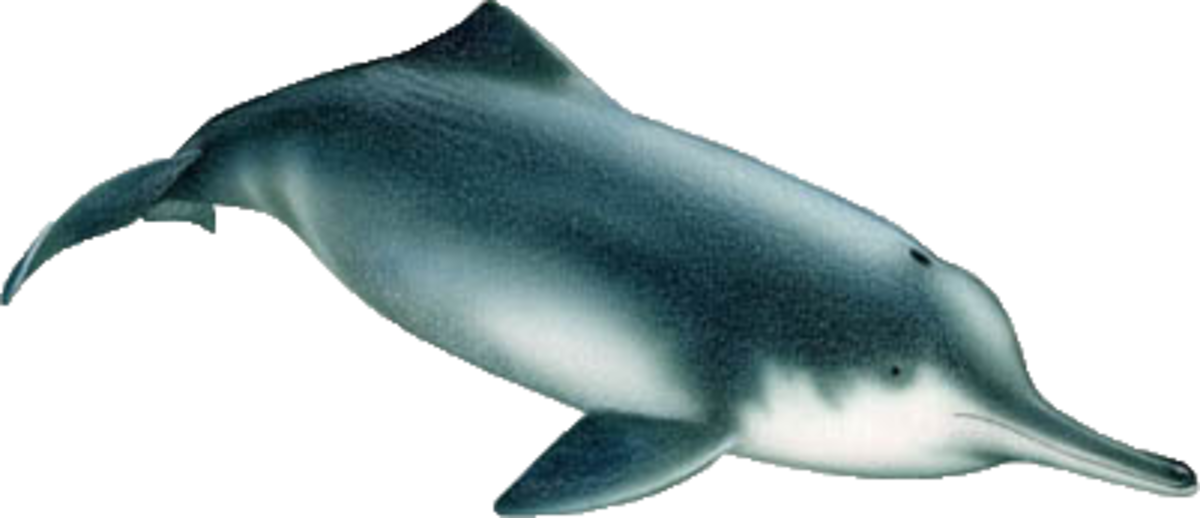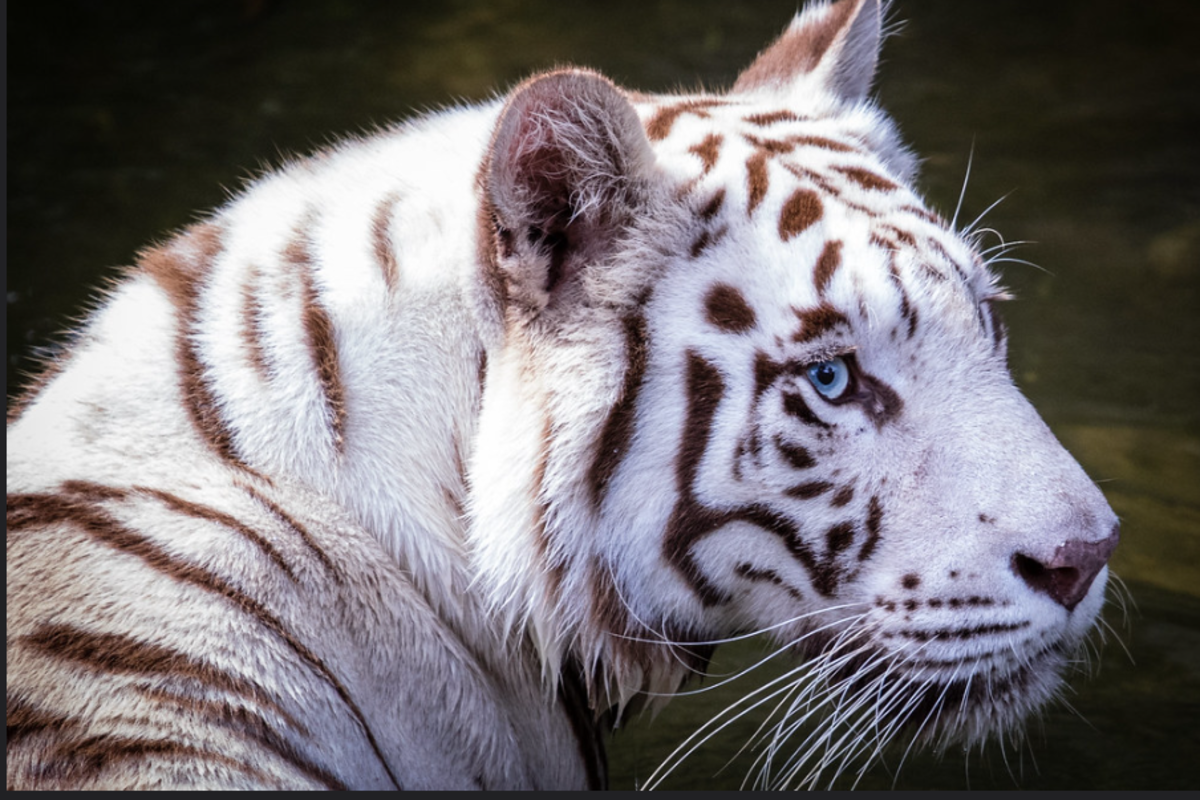- HubPages»
- Education and Science»
- Life Sciences»
- Endangered Species
Gorilla
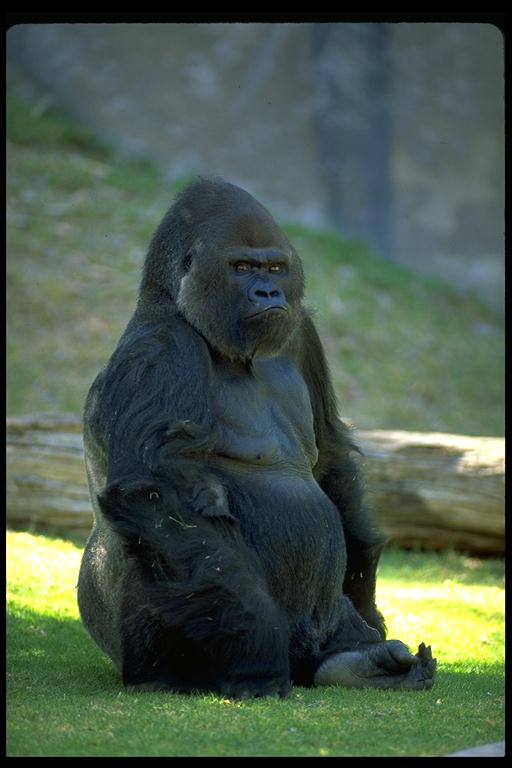
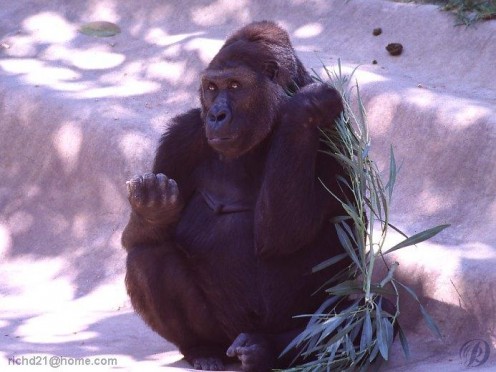
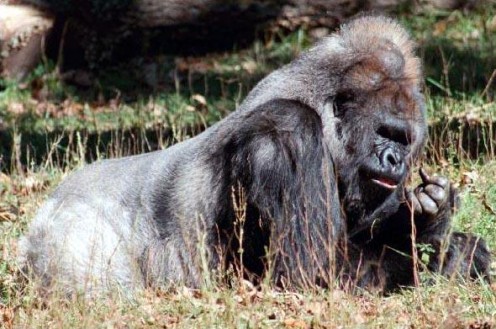
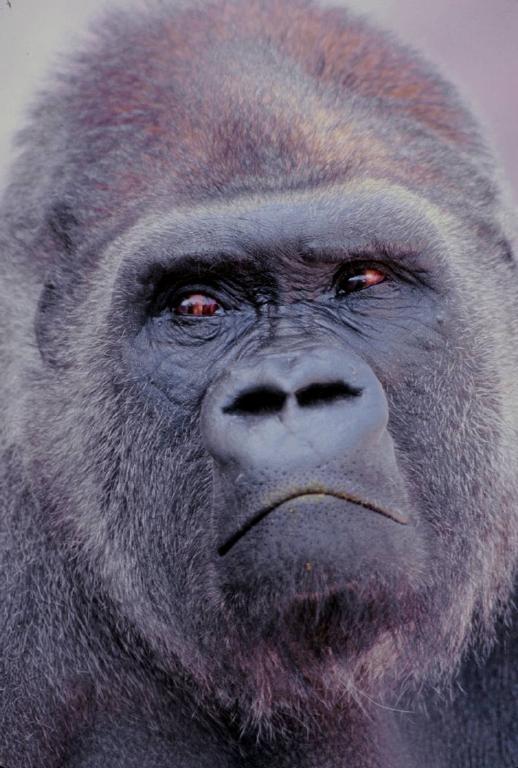
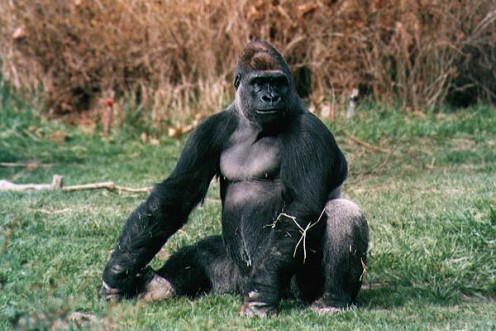
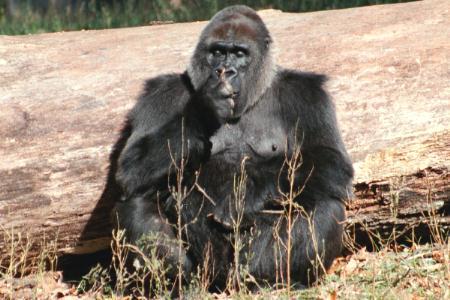

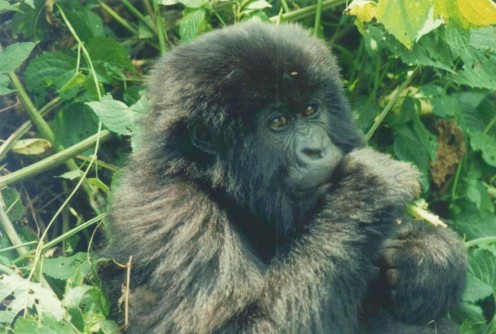
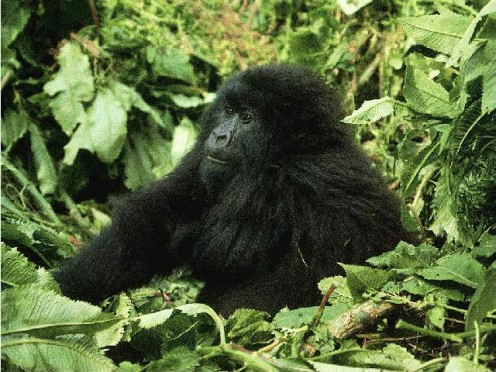
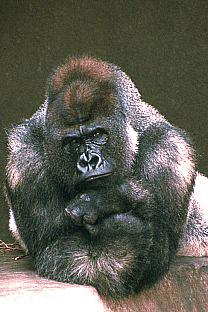
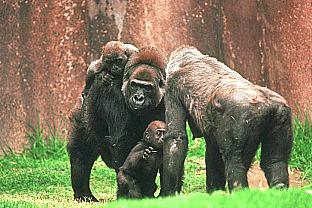
Gorilla
Scientific Name: - Gorilla beringei
Class: - Mammalia
Order: -Primate
Family: - Hominidae
Genus: - Gorilla
Species: - gorilla Subspecies: beringei
Physical Description: - Gorillas are the largest and most powerful species of primate. They have no tails and jet black skin. Facial features include short muzzles, a prominent brow ridge, large nostrils, and small eyes and ears. Gorillas have large jaw muscles and broad, strong teeth. Coarse, dark hair covers the entire body except for the face, ears, hands, and feet.
Generally, the hair on the back and rump of older males grows grey and is lost with age. This coloration pattern has resulted in older males being known as "silverbacks".
Western lowland gorillas have a slightly more brown/grey coat color with shorter hair than the two eastern subspecies. Eastern lowland gorillas and mountain gorillas have black coats, and are usually physically larger with larger teeth than western lowland gorillas.
Males are usually larger than females, reaching weights up to 275 kg in captivity. In the wild, male gorillas average 180 kg, with females often almost half that weight. Male gorillas have stocky bodies standing usually 1.75 meters in height with bent knees. On average, females are only 1.25 meters tall. Large males, with large body size, canines, and jaw musculature, have increased physical and social power within the group.
Hands are proportionately large with nails on all digits and very large thumbs. Gorillas frequently stand upright, but walk in a hunched, quadrupedal fashion, with hands curled and knuckles touching the ground. Walking quadrupedally requires long arms, and the arm span of gorillas is larger than their standing height.
Habitat: - Africa's tropical secondary and montane forests, where the open canopy allows much light to reach the forest floor, provide the best habitat for gorillas. Gorillas live at a wide range of altitudes, from at sea level in western Africa, to habitat of almost 4,000 meters of elevation. Though far less vegetation is present at these higher altitudes, enough is available for a Gorilla to have a plentiful food supply.
Habits: - Gorillas build day and night nests of branches and leaves for cushion on the ground or in trees. Lightweight individuals can be seen swinging from tree to tree by their arms (brachiation).
Mutual grooming is not as common in gorillas as it is in other primate species.
Behavior: - Gorillas are generally peaceful, shy, and amiable unless threatened. However, males will stand erect and beat their chests with their fists in attempts to intimidate or show off their strength. They growl loudly and become very dangerous when annoyed or attacked. Gorillas also demonstrate aggression by charging towards perceived intruders. They rarely hit the intruder, though. Instead, they rush past and may charge again.
Gorillas band together in groups of 5 to 15 individuals. A typical group consists of one dominant male, many adult females with their young. In some cases, a smaller pack of less dominant males will associate on the periphery of this core group. The dominant male, sometimes known as a silverback because of the age-related greying hair on his back, remains dominant until another male displaces him from his position. Displaced silverbacks typically lead a solitary life.
Fighting plays an important role in group hierarchy. It is common that a newly-dominant male, after displacing the former dominant male, is likely to kill the infants in the group, thus returning all lactating females prematurely to reproductive cycling. In doing this, a male increases his chance to produce offspring, as his tenure as a dominant male is of unknown duration. To guard against potentially infanticidal males, a male's capacity to fight and ensure survival of his progeny is unquestionably paramount to receptive females.
Male gorillas are known to make a hooting sound as an alarm to all members of the group, each of whom becomes instantly alert. Groups may travel together for months and usually years at a time, but, because of the abundance of food in the vicinity of their camps and their imposing size, little time and energy is typically devoted to travel. For these reasons, no territorial defense is exhibited and often ranges of neighboring groups overlap. Gorillas communicate using calls, facial expressions and physical postures, and through tactile means. Scents may play some role in communication in these animals.
Diet: - Wild gorillas are herbivores, subsisting mainly on juicy stemmed plants. They will also consume leaves, berries, ferns and fibrous bark. Usually gorillas feed during the morning and afternoon. Lowland gorillas, G. gorilla and G. g. graueri, climb trees up to 15 meters in height in search of food. Mountain gorillas cannot climb so proficiently due to the lack of thick, supportive trees at the altitudes which they inhabit.
Gorillas never completely strip vegetation from a single area. The rapid regrowth of the vegetation they consume allows them to stay within a reasonably confined home range for extended periods of time.
Breeding: - Typically one dominant male within a gorilla troup mates with the females in that group. The dominant male, because of his superior fighting prowess and the perceived ability to better protect females and their offspring, is preferred by the females.
As in humans, there is no fixed breeding season for gorillas, and females menstruate every 28 days. A single young, weighing approximately 2 kg, is born after nine months of gestation. Young gorillas nurse for 3 to 4 years. Females give birth at about four-year intervals, beginning when they are approximately ten years of age. However, a high mortality rate means surviving offspring are produced only once every 6 to 8 years. Males, because of physical competition for mates, only rarely breed before the age of 15.
Infants are suckled for 3 to 4 years. In the case of multiple young, the mother, who must carry the infants, finds it difficult to care for two and frequently allows one to die. Young grow at approximately twice the rate of human babies and are able to crawl and cling to their mother by the age of 3 months. They remain dependent upon the mother for 3 to 4 years.
Females provide the young with transportation, food, and socialization. They protect their young within the group. Males do not typically interact much with the young, although they do protect their offspring by defending the social group against potentially infanticidal males who might wish to take over control of the group.
Wild gorillas live between 35 and 40 years with some captive gorillas living almost 50 years.
Predators: - Predation upon gorillas is probably not common, due to their imposing size. Young animals may fall prey to raptors or large carnivores. Also, gorillas that have not yet been weaned are subject to infanticide by males of their species.
Gorillas are also hunted illegally in Africa for their skins and their meat, which is served in restaurants of large towns. In addition, the capture and sale of gorillas for zoos, while reprehensible to many, is undoubtedly economically profitable
Disease: - Wild gorillas may suffer from colds, coughs, rhinitis, sinusitis and inflammations of the laryngeal sac, and pneumonia, especially in times of heavy precipitation Importance:
Gorillas have been used in medical study of human diseases and behavioral, linguistic, and psychological studies. The mental capacity of gorillas is still being explored. Gorillas show more persistence and memory retention in problem solving studies than do their, more excitable, near relatives, chimpanzees. Gorillas are more likely to perform a task out of interest than to earn a reward. After some success with chimpanzees, researchers in the mid-1970s turned their attention to communicating with gorillas using sign language, and one gorilla, Koko, mastered more than 1000 signs.
Distribution: - Gorillas inhabit the forests of equatorial Africa from the western lowlands near the Cameroon coast to an altitude of about 3000 m (about 10,000 ft) in the central highlands of the Democratic Republic of the Congo (DRC, formerly Zaire) and Uganda. Three subspecies exist, Gorilla gorilla, western lowland gorillas, Gorilla gorilla graueri, eastern lowland gorillas, and Gorilla beringei, mountain gorillas. Each subspecies occupies a different area of central African tropical secondary forests. Gorilla resides in higher densities in Gabon, Cameroon, and western-central Africa. Gorilla gorilla graueri is found at low elevation in the DRC. Mountain gorillas, live at higher elevations in Uganda and eastern DRC. Western and eastern lowland subspecies of gorillas cannot swim and are thus physically and reproductively isolated by the Zaire River. The two eastern subspecies, G. g. graueri and G. beringei, do not interact because they occupy different habitats.
Conservation Status:
IUCN Red List: [link]:
Critically endangered.
US Federal List: [link]: CITES: [link]: http://www.cites.org/
Each gorilla subspecies is either listed as endangered or critically endangered in the wild. In addition, conservation agencies recognize several additional subspecies of gorilla, including G. g. dahli. Approximately 9,000 to 10,000 G. gorillas exist in western Africa and 4,000 G. g. graueri live in eastern DRC. Unfortunately, the numbers of mountain gorillas are not as promising, with perhaps less than 400 remaining in the wild.
Even though all eight countries with wild gorilla populations have laws governing their capture and hunting, in none of them are the laws strictly enforced. As recently as fifteen years ago, there was active trade in gorilla skulls from the Volcano National Park in Rwanda. Today, countries such as Rwanda are implementing educational, conservation, and tourism programs in an effort to demonstrate to the local population the value of the native flora and fauna. Still, long-term ecological stability is sacrificed for shorter term economical gain in many areas. Nevertheless, hunting is a relatively minor concern compared to deforestation and the effects of political unrest.
The forests which the gorillas depend on in Africa are slowly being cut down for timber and to make way for agricultural and, in some cases, industrial development. As a case in point, Nigeria was home to gorillas twenty-five years ago. Today, gorillas have become extinct there and cattle-ranches cover what used to be gorilla habitat. Until human population growth is curbed in central Africa, particularly DRC, gorilla habitat is in danger of shrinking yet further and becoming dangerously scarce. ("Convention on International Trade in Endangered Species of Wild Fauna, Flora", and October 11, 1999; MacDonald, 1987; Wilson and Reeder, 1993)
References:
The lives of gorillas in the wild was enigmatic until American zoologist George B. Schaller observed the species for many years and published a pioneering study titled, "The Mountain Gorilla: Ecology and Behavior" (1963). American Diane Fossey followed his work by studying and living among mountain gorillas from 1963 until her death in 1985 at the Karisoke Research Center, which she had established in Rwanda in 1967.Dian Fossey Gorilla Fund
- Dian Fossey - The Dian Fossey Gorilla Fund International
Review the highlights of Dian Fossey's career, read her detailed biography, and learn more about the Karisoke Research Center
